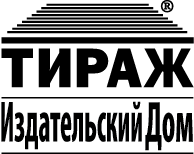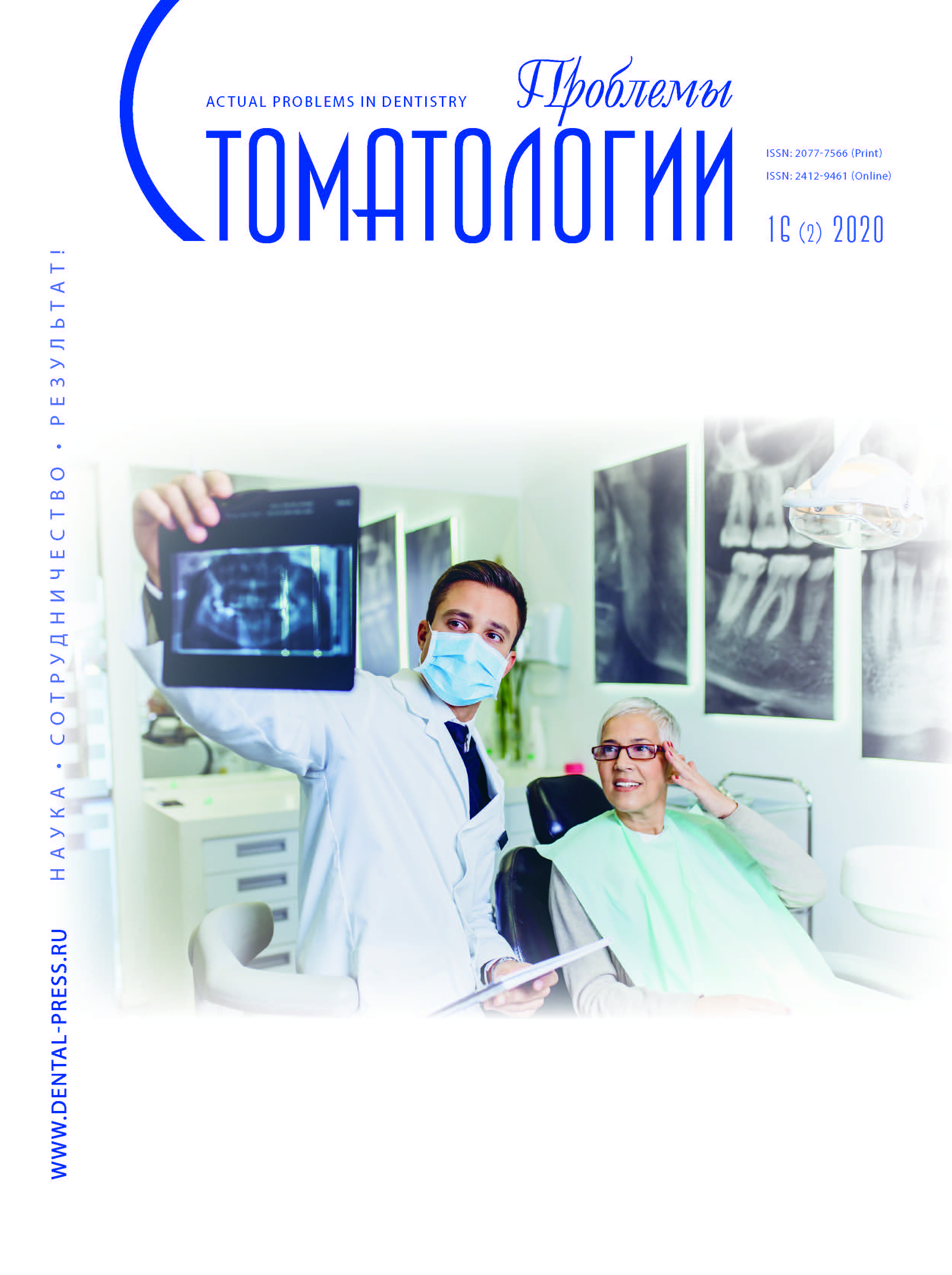Nizhniy Novgorod, Nizhny Novgorod, Russian Federation
Nizhniy Novgorod, Russian Federation
Nizhniy Novgorod, Nizhny Novgorod, Russian Federation
Nizhniy Novgorod, Nizhny Novgorod, Russian Federation
Subject. For the treatment of diseases of the temporomandibular joint, occlusal splints are used, in the manufacture of which different methods are used, which have their negative and positive properties. 3D printing technology allows the manufacture of occlusal splints with high precision fit to the dentition and with uniform occlusal contacts with respect to antagonist teeth. The goal is to study errors in the technology of manufacturing occlusal splints for the treatment of patients with diseases of the temporomandibular joint. Methodology. Thirty patients with distal displacement of the heads of the temporomandibular joint in the range of 1-1.5 mm were examined. Patients were diagnosed with Angle Grade 2. The methods used were tele-radiography, 3D computed tomography, and laboratory scanning of jaw models. Results. Errors were revealed in the manufacture of occlusal tires using digital scanning in the EXO-CAD program, various features of adaptation to occlusal tires obtained using 3D printing and cad-cam milling. Findings. 3D printing technology allows the manufacture of occlusal splints with high precision fit to the dentition with uniform occlusal contacts with respect to antagonist teeth. The technology for milling occlusal tires gives an advantage in their strength compared to 3D printing technology. However, the mouthguards made by technology are inferior to mouthguards made on a 3D printer in terms of elasticity of fit to the dentition, which can cause discomfort and pain during the use of milled mouthguards. Occlusal tires made by cold polymerization have lower accuracy of fit to the dentition and require correction when fitting and checking the occlusal relationship of the dentition.
muscular-articular dysfunction, occlusal tires, temporomandibular joint, milling technology, cold polymerization of plastic, 3D printing method, occlusal contacts
1. Mayer, P., Heinzer, R., Lavigne, G. (2016). Sleep bruxism in respiratory medicine practice. Chest, 149 (1), 262-271. DOI:https://doi.org/10.1378/chest.15-0822. PMID: 26225899.
2. Guaita, M., Hogl, B. (2016). Current treatments of bruxism. Curr Treat Options Neurol, 18 (2), 10. DOI:https://doi.org/10.1007/s11940-016-0396-3. PMID: 26897026.
3. Hoashi, Y., Okamoto, S., Abe, Y. et al. (2017). Generation of neural cells using iPSCs from sleep bruxism patients with 5-HT2A polymorphism. J Prosthodont Res, 61 (3), 242-250. DOI:https://doi.org/10.1016/j. jpor.2016.11.003. PMID: 27916472.
4. Sato, S., Slavicek, R. (2001). Bruxism as a stress management function of the masticatory organ. The Bulletin of the Kanagawa Dental College: BKDC/KDS, 29, 101-110. PMID: 15675433.
5. Lobbezoo, F., Ahlberg, J., Manfredini, D., Winocur, E. (2012). Are bruxism and the bite causally related. J Oral Rehabil, 39 (7), 489-501. DOI:https://doi.org/10.1111/j.1365-2842.2012.02298.x. PMID: 22489928.
6. Rintakoski, K., Hublin, C., Lobbezoo, F. et. al. (2012). Genetic factors account for half of the phenotypic variance in liabilityto sleep-related bruxism in young adults: a nationwide Finnish twin cohort study. Twin Res Hum Genet, 15 (6), 714-719. DOI:https://doi.org/10.1017/thg.2012.54. PMID: 22953759.
7. Cruz-Fierro, N., Martínez-Fierro, M., Cerda-Flores, R. M. et al. (2018). The phenotype, psychotype and genotype of bruxism. Biomedical Rep, 8 (3), 264-268. DOI:https://doi.org/10.3892/br.2018.1041.
8. Kochubeynik, A. V., Saakyan, M. Y., Goryacheva, I. P., Uspenskaya, O. A. (2020). Periodontal diseases : handbook. N. Novgorod : Privolzhskiy Research Medical University, 48.
9. Bekreev, V. V. (2019). Diagnostika i kompleksnoe lechenie zabolevanij VNChS [Diagnostics and complex treatment of TMJ diseases]. Moscow. (In Russ.)
10. Vecherkina, Zh. V., Chirkova, N. V., Kartavceva, N. G., Shherbinin, A. S., Kalinichenko, V. S. (2018). Sistematizaciya vozmozhny`x oshibok v ortopedicheskoj stomatologii pri izgotovlenii metallokeramicheskix konstrukcij [Systematization of possible errors in orthopedic dentistry in the manufacture of cermet structures]. Sistemny`j analiz i upravlenie v biomedicinskix sistemax [System analysis and control in biomedical systems], 17, 1, 38-42. (In Russ.)
11. Gileva, O. S., Kuklina, E. A., Rogozhnikov, A. G., Xalyavina, I. N., Libik, T. V., Chuprakov, M. A. (2017). Racional`ny`j sposob protezirovaniya defektov tverdy`x tkanej zubov pri zabolevaniyax slizistoj obolochki polosti rta [A rational method for prosthetics of defects in hard tissues of teeth in diseases of the oral mucosa]. Stomatologiya Bol`shogo Urala : materialy` Mezhdunarodnogo kongressa: molodezhnaya nauchnaya shkola po problemam fundamental`noj stomatologii [Dentistry of the Big Urals: materials of the International Congress: youth scientific school on the problems of fundamental dentistry], 24-27. (In Russ.)
12. Brokar, D., Lalyuk, Z.-F., Knellesen, K. (2015). Bruksizm [Brooksism]. Moscow :Azbuka, 89. (In Russ.)
13. Zhulev, E. N., Aleksandrov, A. A. Bruksizm : uchebnoe posobie [Bruxism: a training manual]. PIMU.
14. Zhulev, E. N., Aleksandrov, A. A., Shevchenko, E. A., Uspenskaya. O. A. (2017). Zabolevaniya parodonta i slizistoj obolochki polosti rta pri bruksizme : uchebnoe posobie [Diseases of periodontal and oral mucosa in bruxism: a training manual]. Nizhnij Novgorod : NNGU im. N.I. Lobachevskogo, 104. (In Russ.)
15. Uspenskaya, O. A., Kruglova, N. V. (2018). Zabolevaniya parodonta : uchebnoe posobie [Periodontal disease: a training manual]. N. Novgorod : PIMU, 148. (In Russ.)
16. Ivashov, A. S., Zajcev, D. V., Mandra, Yu. V. (2011). Zavisimost` prochnostny`x svojstv sovremenny`x kompozicionny`x materialov pri szhatii ot temperatury` polimerizacii [Dependence of the strength properties of modern composite materials under compression on the polymerization temperature]. Problemy` stomatologii [Actual Problems in Dentistry], 5, 30-34. (In Russ.)
17. Mandra, Yu. V. (2012). Innovacionny`e texnologii v stomatologii [Innovative technologies in dentistry]. Problemy` stomatologii [Actual Problems in Dentistry], 3, 66-68. (In Russ.)
18. Manfredini, D. (2013). Visochno-nizhnechelyustny`e rasstrojstva [Temporomandibular disorders]. Moscow : ABC, 500. (In Russ.)
19. Nikol`skij, V. O., Uspenskaya, O. A., Ganicheva, O. V., Aleksandrov, A. A. (2017). Strukturny`e izmeneniya tverdy`x tkanej zubov, voznikayushhie pri otbelivanii [Structural changes in the hard tissues of teeth that occur during whitening]. Problemy` stomatologii [Actual Problems in Dentistry], 13, 2, 29-32. (In Russ.)
20. Uspenskaya, O. A., Saakyan, M. Yu., Aleksandrov, A. A. (2018). Orofacial`ny`e bolevy`e sindromy` v stomatologicheskoj praktike. Klinika, diagnostika, lechenie : uchebnoe posobie [Orofacial pain syndromes in dental practice. Clinic, diagnosis, treatment: study guide]. Nizhny Novgorod : Publishing House of the Volga Research Medical University, 182. (In Russ.)
21. Ryabov, S. V. (2005). Kliniko-anatomicheskoe obosnovanie oformleniya okklyuzionnoj poverxnosti zubny`x ryadov [Clinical and anatomical substantiation of the design of the occlusal surface of the dentition]. Tver`. (In Russ.)
22. Saakyan, M. Yu., Uspenskaya, O. A., Aleksandrov, A. A. (2019). Orofacial`ny`e boli: uchebnoe posobie [Orofacial pain: a training manual]. PIMU, 238. (In Russ.)
23. Uspenskaya, O. A. (2019). Issledovanie bioximicheskix pokazatelej kostnogo metabolizma rotovoj zhidkosti pri lechenii agressivny`x form parodontita [Study of biochemical parameters of bone metabolism of the oral fluid in the treatment of aggressive forms of periodontitis]. Problemy` stomatologii [Actual Problems in Dentistry], 1 (15), 68-73. (In Russ.)
24. Uspenskaya, O. A., Kachesova, E. S. (2017). Izmeneniya bioximicheskix pokazatelej krovi pri lechenii by`stroprogressiruyushhego parodontita [Changes in blood biochemical parameters in the treatment of rapidly progressive periodontitis]. Problemy` stomatologii [Actual Problems in Dentistry], 13, 2, 33-38. (In Russ.)
25. Uspenskaya, O. A., Lukiny`x, L. M. (2017). Chtenie rentgenogramm zubov i chelyustej v razlichny`e vozrastny`e periody` v norme i patologii : uchebnoe posobie[Reading radiographs of teeth and jaws at various age periods in normal and pathological conditions: a training manual]. 8, Nizhnij Novgorod : NGMA, 44. (In Russ.)
26. Fomina, K. A., Chirkova, N. V., Andreeva, E. A., Kaverina, E. Yu. (2019). Issledovanie rastvora dlya dezinfekcii s``emny`x plastinochny`x protezov spektrofotometricheskim i organolepticheskim sposobami [Study of a solution for the disinfection of removable plate prostheses by spectrophotometric and organoleptic methods]. Sistemny`j analiz i upravlenie v biomedicinskix sistemax [System analysis and control in biomedical systems], 18, 1, 36-39. (In Russ.)
27. Xvatova, V. A. (2015). Klinicheskaya gnatologiya [Clinical gnatology]. Moscow : Medicina, 296. (In Russ.)



















